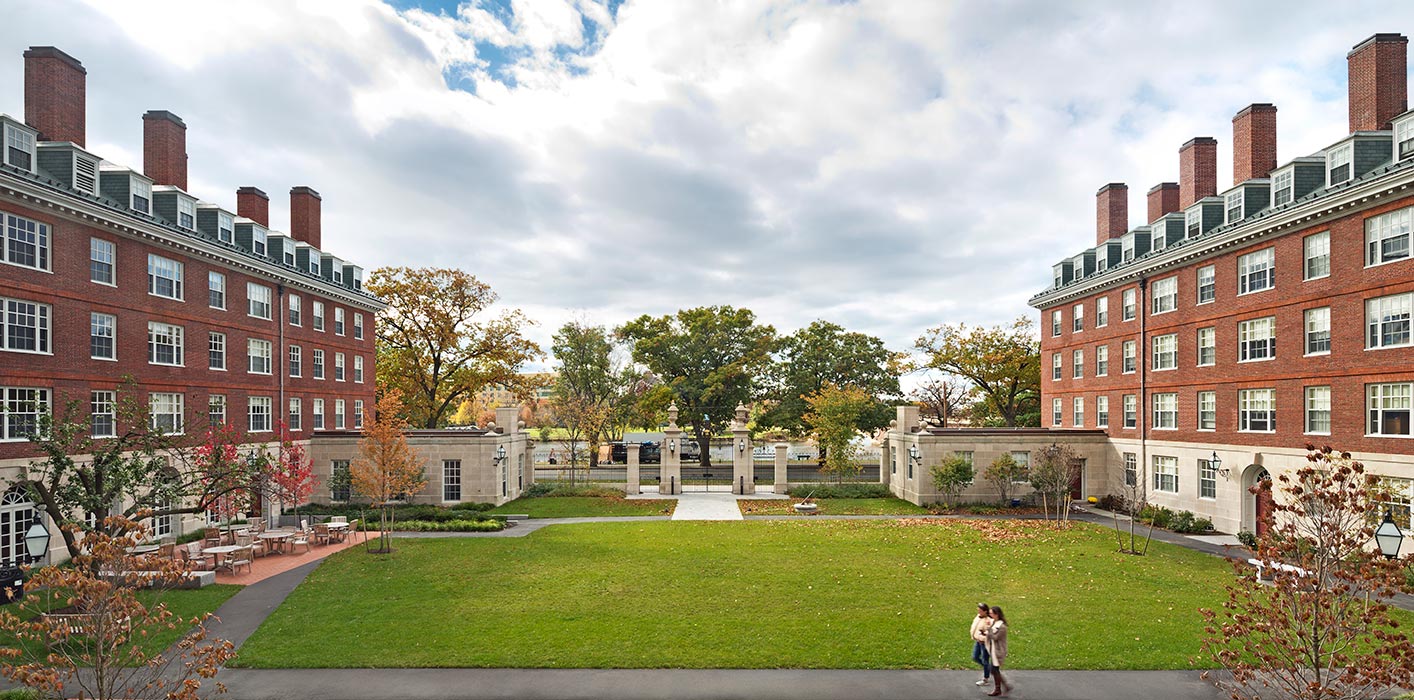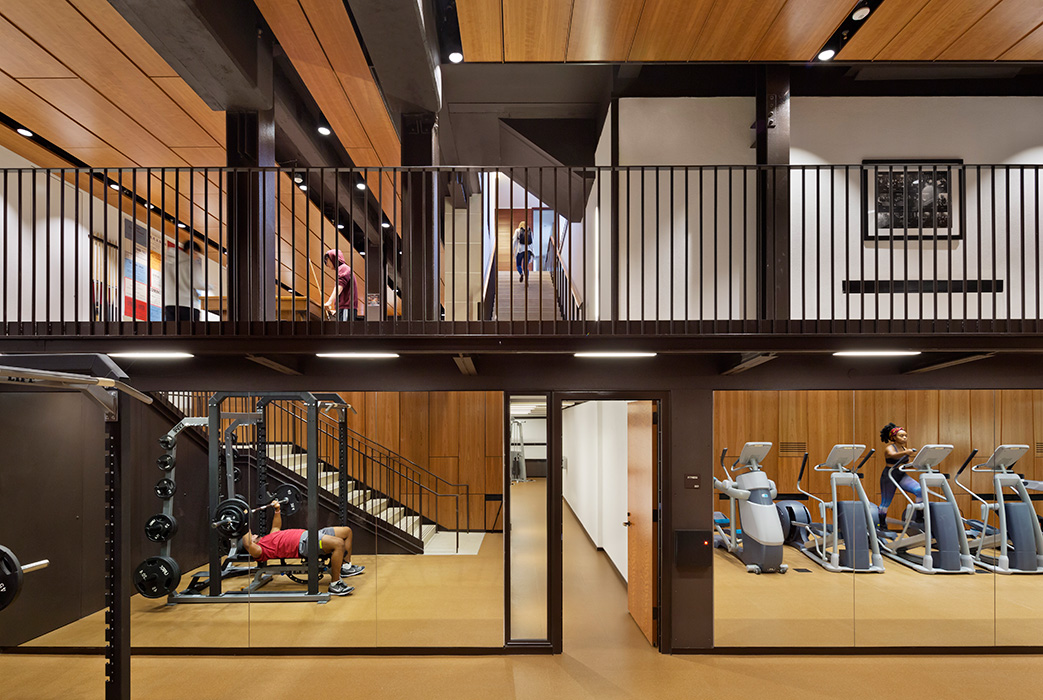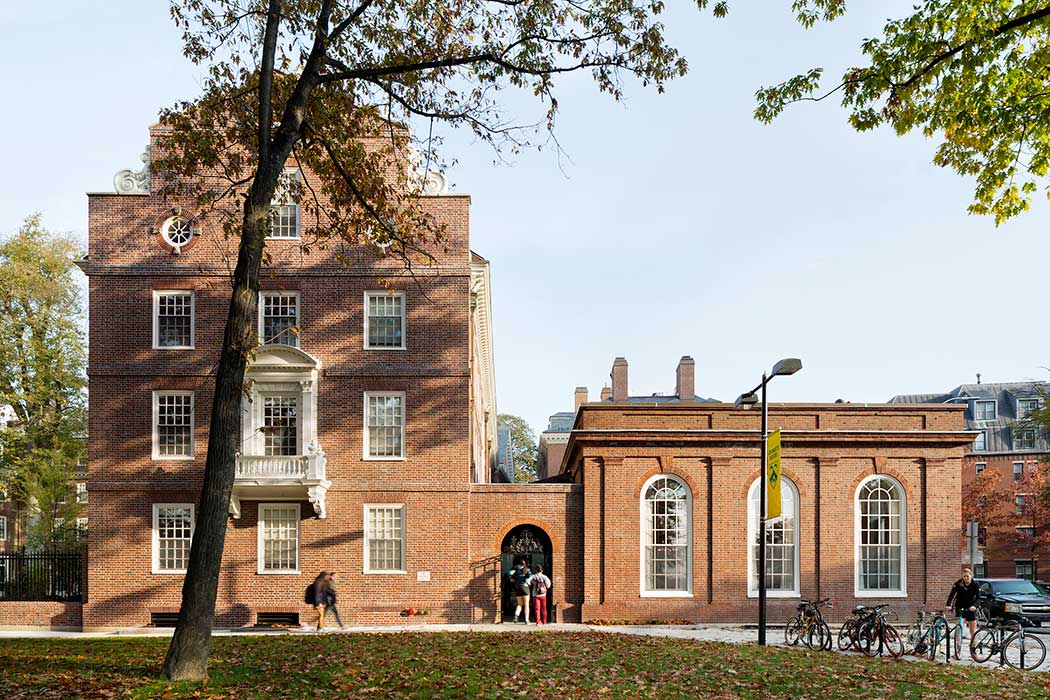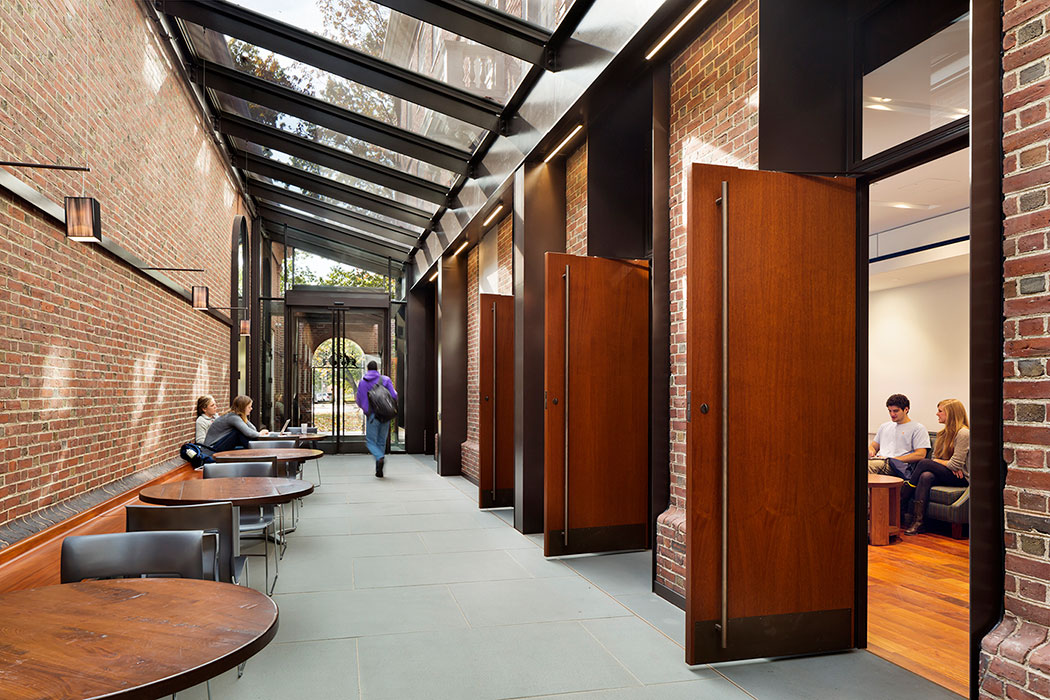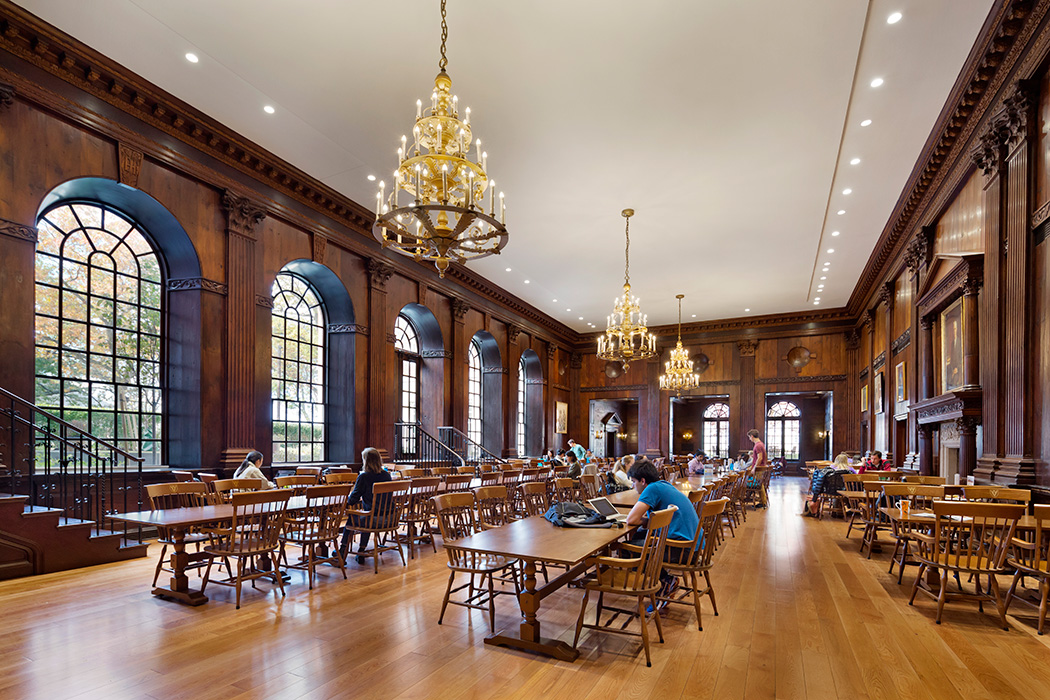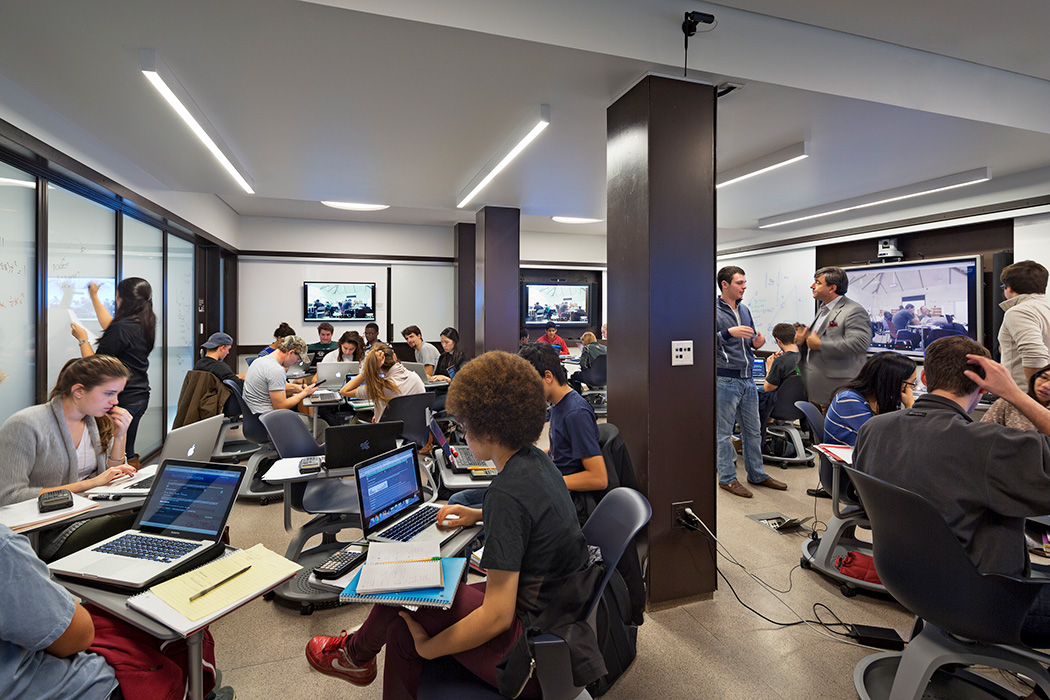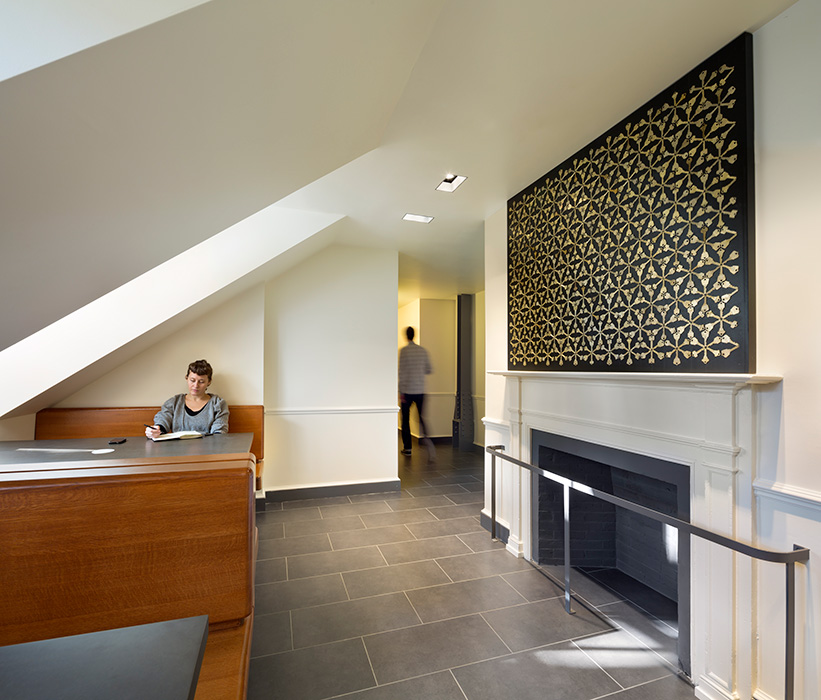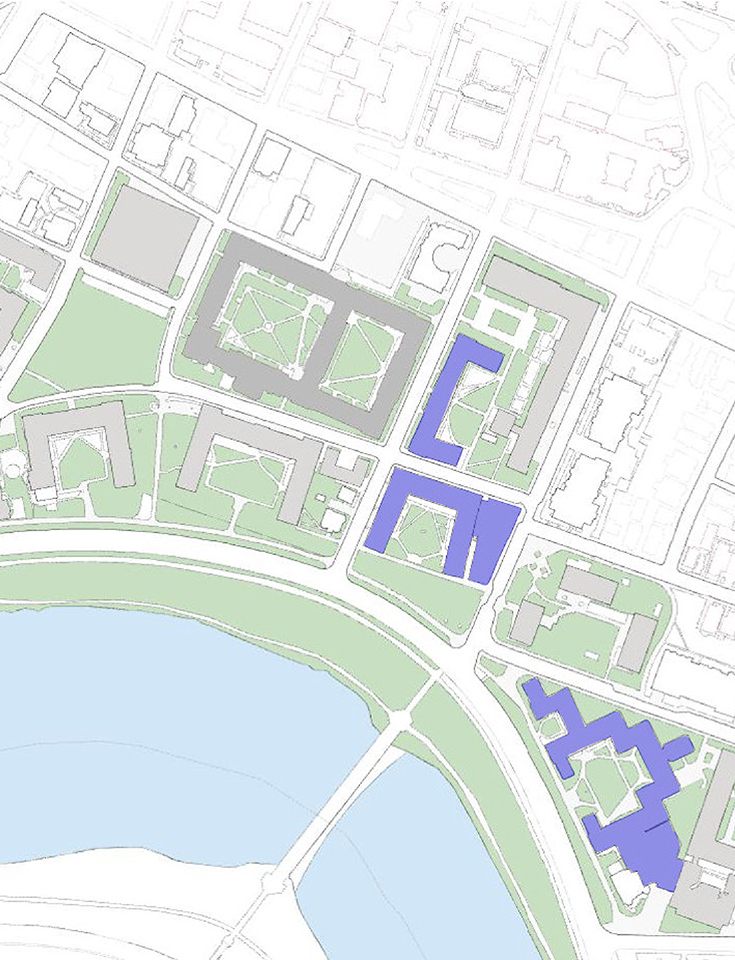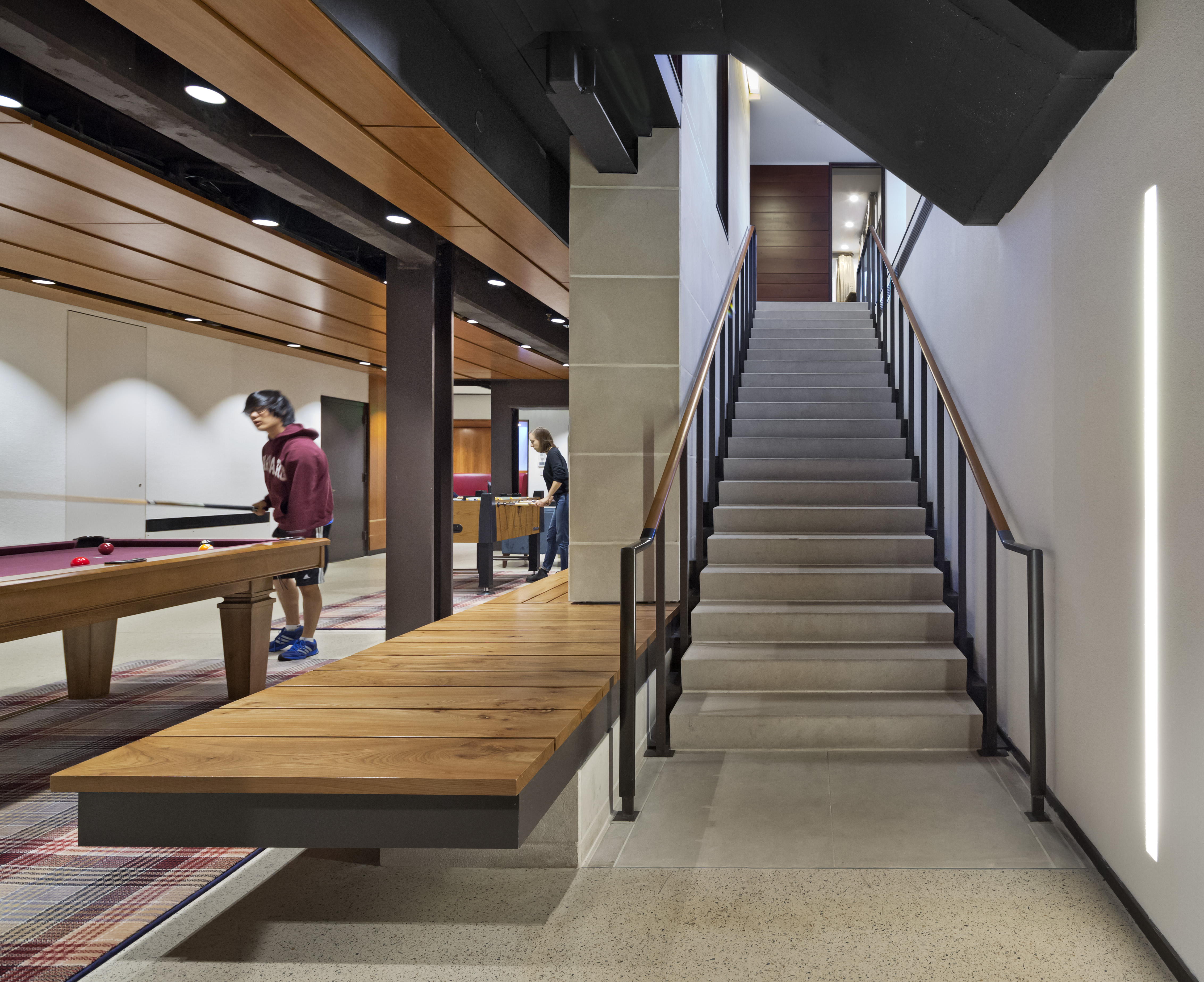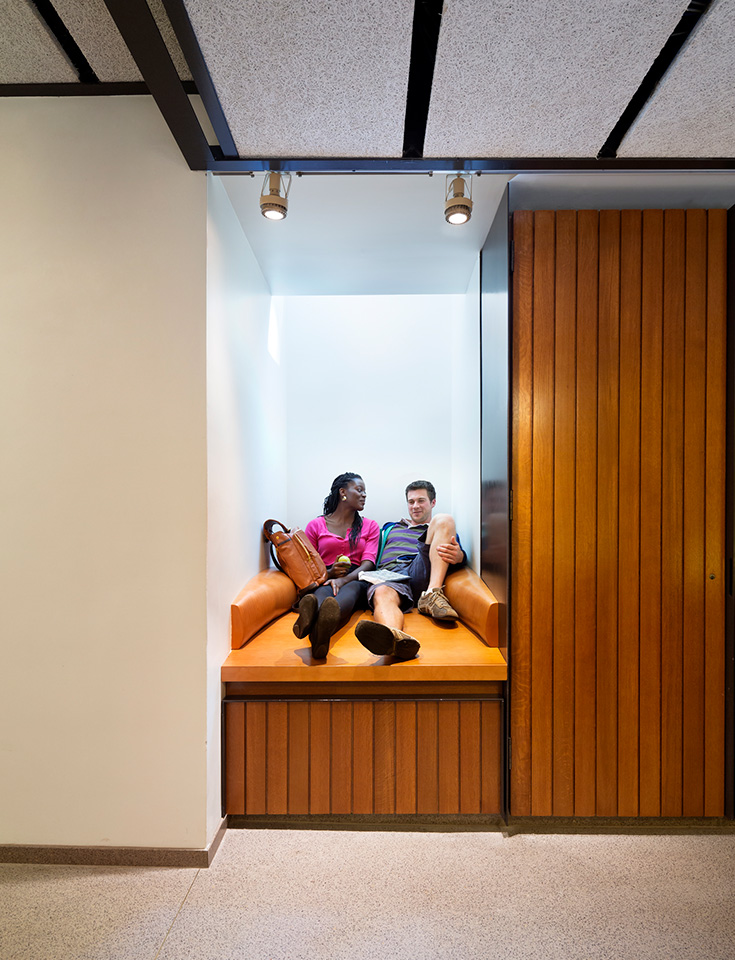How can we renew and preserve a historic college house system to amplify its original culture with modern technology and unprecedented accessibility?
Of the twelve Harvard River Houses all slated for renewal, KieranTimberlake completed the first three, setting precedents for energy use, accessibility, and design solution.
History
Harvard's 85-year old residential House system forms the basis of its undergraduate education. In the 1920s and ‘30s, the first Harvard Houses—a constellation of seven standalone dormitories banking the Charles River—set a new standard for residential liberal arts education in the US, expanding the learning environment beyond classrooms and study halls by incorporating dorm life itself as a key facet of the college experience.
Today, 98% of Harvard undergraduates call one of the twelve Harvard Houses home, but, except for minor code upgrades, most of the buildings remained as originally constructed. Each Harvard House carries its own distinct identity and House culture, but a common renovation challenge persisted throughout: how do we double down on the idea of the House system with the goal of ushering their historic purpose and architecture into the future?
KieranTimberlake piloted the renewal program and was directly responsible for four House Renewal projects: Stone Hall at Quincy House, McKinlock Hall at Leverett House, Dunster House, and Lowell House, each part of a National Historic District encompassed by the original seven Harvard River Houses.
Modern interventions establish new pathways and connections while striking a delicate balance between preservation and transformation.
© Michael Moran / OTTO
The goals of our system-wide renovation for the Houses—which span more than 2.5 million square feet and accommodate roughly 4,500 students—were to renew the House life experience with modern accommodations while preserving the buildings' historic character and architecture. In short, we planned a way forward for the Harvard Houses' next generations of use.
To carefully assess the renewal's scope, mandates, and opportunities for further continuity of the Harvard House system, we took a district-wide approach. We conducted intensive site studies to understand student life and pedestrian linkages, plan system-wide distribution of emergency power and chilled water, develop waterproofing methods to account for the below-grade levels of the Houses' marsh land site, and even identify the impending local impact of global warming and sea level rise.
Accessibility and Performance
Beyond preserving and refortifying the House system's cultural relevance, the Renewal project was also grounded in a keen drive to upgrade the performance and sustainability of the buildings themselves. New, discretely implemented building systems and extensive envelope upgrades resulted in LEED Gold and Platinum ratings for the three Houses.
The buildings' existing configuration afforded left over nooks and crannies that were converted to a variety of informal study and gathering spaces.
© Michael Moran / OTTO
More pressingly, our renewal efforts prioritized unprecedented, full building accessibility by opening the ground floor entryways and redesigned basement common spaces to those requiring mobile assistance. Unobtrusive slopes and revamped vertical circulation now accommodate wheelchair linkages throughout and between Houses.
Each Harvard House is a nested community within the larger campus, offering the opportunity for students to develop a distinct sense of belonging. Today, each House remains a discrete community nested within the larger campus. The successful renewal of these buildings fosters a fully inclusive and interconnected student body. Reconfigured to accommodate modern student life, the buildings are more themselves than ever before, ready to evolve with rapidly changing educational models.


